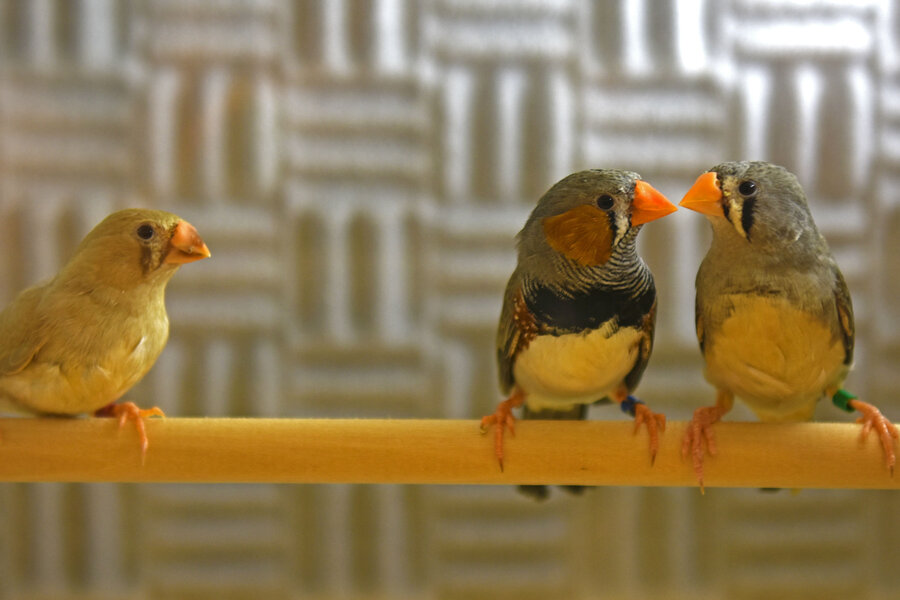How do songbirds learn their melodies? Scientists reveal clues.
Loading...
Human babies seem to have a natural knack for languages. Fluency in any of the world’s 6,500 languages comes within the first few years of life, without much apparent effort.
A recent study of how songbirds learn their melodies seeks to shine light on the cognitive processes through which young birds learn and imitate vocal communication – insights which could lead to a better understanding of the development of human speech, as well.
“A bird’s baby song is really immature. There’s no clear structure - it’s more like a baby babbling, but then it becomes structured, like the tutor song [as the bird gets older],” Yoko Yazaki-Sugiyama, co-author of the study published in Nature Communications Tuesday, tells The Christian Science Monitor in a phone interview.
The male zebra finch learns a complex song from his father, or tutor, in order to attract a female finch. Dr. Yazaki-Sugiyama, an assistant professor at the Okinawa Institute of Science and Technology Graduate University in Japan, and Shin Yanagihara, a researcher at the same school, were the first to identify the neurons in zebra finches’ brains associated with the auditory memory of the father’s song.
The pair studied young zebra finches in the critical period of development, when brain circuits are considered very flexible, to examine the impact of auditory experiences, particularly listening to a tutor's song.
Zebra finches begin memorizing their tutor's song between 20 and 50 days after hatching. At first, they just listen and make crude vocalizations, but by 90 days old they develop their own distinctive song, based off their tutor’s song, according to a previous study from scientists at the University of Illinois, Urbana.
The evolution from silence to babbling to a distinctive melody is apparently made possible by the experience of listening to the bird's father’s song to form a memory. Once the birds have the tutor's song memorized, they try to mimic it.
The researchers monitored the neuronal auditory response of both tutored and isolated birds listening to their own song, their tutor’s song, other zebra finches’ songs, and different songbirds’ songs. The study revealed that about 5 percent of the tutored bird’s neurons, or 27 neurons, responded exclusively to their tutor’s songs.
"In the normal, tutored birds, we encountered a group of neurons that responded very strongly to the tutor song, after they had learned the song, but did not respond to the other songs," Dr. Yanagihara said in a press release. "However, for the birds which had no tutor experiences, we did not see any response to the tutor-song, or in this case the genetic-father-song, and no selective neurons at all."
Scientists predict that the selective neurons that respond to the tutor’s song represent the part of the higher auditory cortex where early auditory memory is located in the brain.
"We believe that these tutor song selective neurons represent the memory of the tutor song and that learning the tutor song during the critical period changes the neural circuits to accommodate this memory," Yanagihara said.
Another finding was that the neurons of sleeping birds were less selective than those of awake birds, meaning they responded to other songs in addition to the tutor song.
As for the implications for human language, Yazaki-Sugiyama tells the Monitor that researchers believe that the human brain is also "wired" based on early sensory experiences. But the zebra finch song is much simpler than human speech: it’s a behavior to attract females, rather than a way to convey information. Additionally, each zebra finch has only one distinctive melody.
“Once they develop their own song, it doesn’t change. Each individual has their own specific song that makes them individual. They learn only one thing,” says Yazaki-Sugiyama.








